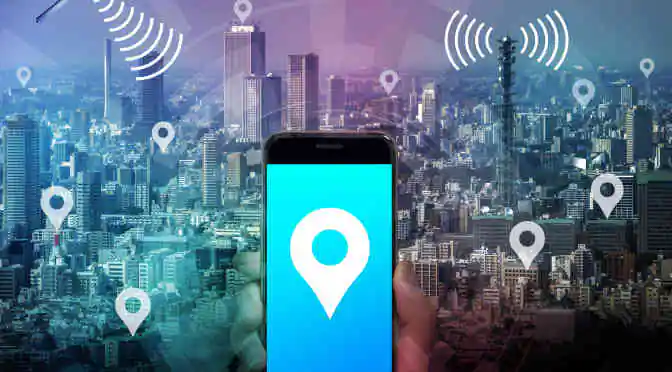Smart cities are a reality today, thanks to the constant evolution of technologies that empower this initiative across the world. From the first human settlement to the industrial revolution, technology breakthroughs have been digitally transforming financial, environmental and social aspects of urban life. Today, the emergence of the Internet of Things (IoT) is generating new opportunities to develop smart cities across several booming metropolitan areas around the world.
Top 5 smart city trends, in 2018 and beyond:
1) Blockchain is enhancing smart city initiative
 Blockchain technology has emerged as a revolutionizing technology that promises to empower any kind of transaction that we make and is poised to impact almost every industry vertical- from banking and education to healthcare and power industry. The public sector is no exception. Blockchain is now an important tool for government and public sector which has a pressing need for secure, complete, trustworthy and authentic information exchange across various fields.
Blockchain technology has emerged as a revolutionizing technology that promises to empower any kind of transaction that we make and is poised to impact almost every industry vertical- from banking and education to healthcare and power industry. The public sector is no exception. Blockchain is now an important tool for government and public sector which has a pressing need for secure, complete, trustworthy and authentic information exchange across various fields.
Indeed, blockchain technology is redefining the framework under which information can be significantly used for transactional purposes. Blockchain presents a significant opportunity for smart cities to make its technology initiatives more secure, efficient, resilient and transparent in consonance with the objectives for the Smart Cities Mission around the world.
2) 5G is making the smart city a reality
 The global wireless industry is growing at an unprecedented rate and moving inexorably toward the next wave of wireless broadband connectivity; 5G network. This trend meaningfully coincides with an increasing focus on the part of technology vendors, municipal authorities and urban planners to make cities smarter.
The global wireless industry is growing at an unprecedented rate and moving inexorably toward the next wave of wireless broadband connectivity; 5G network. This trend meaningfully coincides with an increasing focus on the part of technology vendors, municipal authorities and urban planners to make cities smarter.
5G technology promises to offer high-speed, low-latency services, hailing networks that will allow millions of sensors essential for the rollout of the Internet of Things (IoT) across the world. With its implementation, 5G network will provide a virtual cornerstone for dynamic 21st-century opportunities related to education, transportation, employment, economic growth and more.
3) The expansion of electric vehicle infrastructure
 Urban mobility is poised to change drastically in the future as electric vehicles proliferate, ride sharing continues to grow and autonomous vehicles enter urban fleets. These transformations coincide with the evolution of decentralized and digitalized energy systems and increasing electrification. Today, the stakeholders in private and public sector deploy business models, infrastructure and policies largely based on current patterns of urban mobility and vehicle ownership.
Urban mobility is poised to change drastically in the future as electric vehicles proliferate, ride sharing continues to grow and autonomous vehicles enter urban fleets. These transformations coincide with the evolution of decentralized and digitalized energy systems and increasing electrification. Today, the stakeholders in private and public sector deploy business models, infrastructure and policies largely based on current patterns of urban mobility and vehicle ownership.
The infrastructure today is being deployed in combination with grid edge technologies such as storage, microgrids, smart buildings and decentralized generation and integrated into smart grids that help in fully exploiting the flexibility of electric vehicles (EVs). Digitization will help enhance the customer experience, support efficient infrastructure deployment and enable new solutions associated with autonomous, electric and shared mobility. Charging stations will be the hubs for smart-city services.
4) Advancing cities with public-private partnerships
 One of the most important factors when it comes to adoption of newer and innovative technologies for smart city development is the requirement of huge investments. As a result, municipalities are forging innovative partnerships as a means of modernizing and refurbishing aging infrastructure assets which in turn is improving quality of life for the residents.
One of the most important factors when it comes to adoption of newer and innovative technologies for smart city development is the requirement of huge investments. As a result, municipalities are forging innovative partnerships as a means of modernizing and refurbishing aging infrastructure assets which in turn is improving quality of life for the residents.
Public-private partnerships (PPPs) are an increasingly used tool for local governments to bridge resource gaps. PPPs are established through the need for sustainable infrastructure; a need fulfilled by an economic union between public agencies and private sector associates. Industry experts believe that maintaining a minimum of public control is essential within a smart city and suggests leveraging PPPs as a collaborative growth solution.
5) Securing smart cities
 As the use of IoT-connected devices grows at an unprecedented rate, security becomes an increasingly important challenge. Cybersecurity is not just a technology risk, but a citywide issue which could potentially expose sensitive information about millions of people or cause extensive service outages. Smart meters can be hacked for data that can be used to identify home users. Smart sewage systems can be hacked to release wastewater into freshwater, poisoning local resources.
As the use of IoT-connected devices grows at an unprecedented rate, security becomes an increasingly important challenge. Cybersecurity is not just a technology risk, but a citywide issue which could potentially expose sensitive information about millions of people or cause extensive service outages. Smart meters can be hacked for data that can be used to identify home users. Smart sewage systems can be hacked to release wastewater into freshwater, poisoning local resources.
Consequently, municipalities and businesses are increasingly looking for more secure ways of integrating IoT technologies to increase protections. The global initiative for securing smart cities has a significant head start with guidelines and analyses of developing threats and solutions. The solutions that may include a more standardized Static Application Security Testing (SAST), Computer Emergency Response Teams (CERT), and possibly a regulatory body to ensure that only well-secured cities are investing in these technologies.



